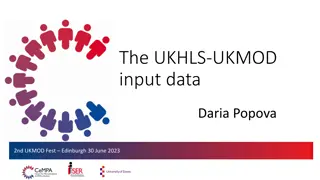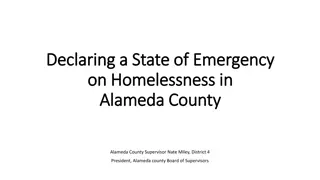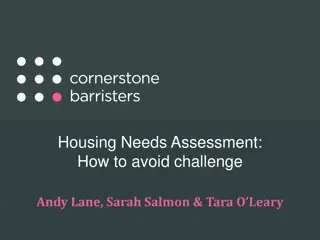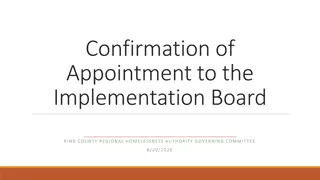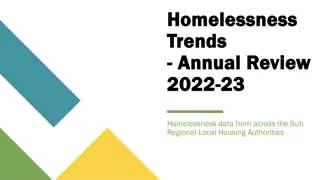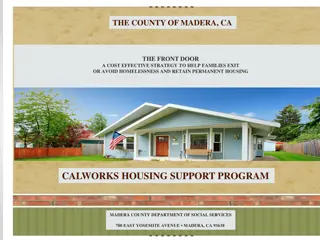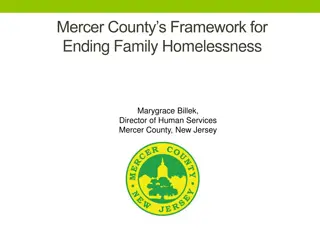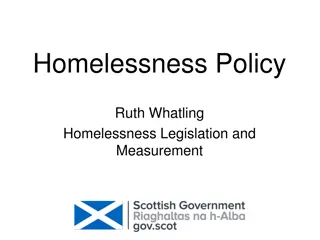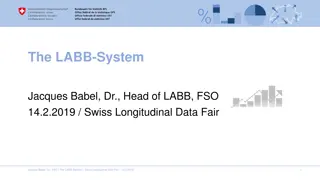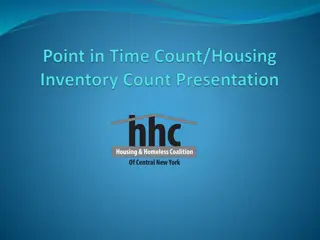Comprehensive Overview of Longitudinal System Analysis in Homelessness Data Management
Explore the details of Longitudinal System Analysis (LSA) including its introduction, data utilization, benefits for Communities of Care (CoC), and alignment with HUD Data Standards. LSA offers improved insights, better control over data, and a more comprehensive look at homelessness trends over time.
Download Presentation

Please find below an Image/Link to download the presentation.
The content on the website is provided AS IS for your information and personal use only. It may not be sold, licensed, or shared on other websites without obtaining consent from the author.If you encounter any issues during the download, it is possible that the publisher has removed the file from their server.
You are allowed to download the files provided on this website for personal or commercial use, subject to the condition that they are used lawfully. All files are the property of their respective owners.
The content on the website is provided AS IS for your information and personal use only. It may not be sold, licensed, or shared on other websites without obtaining consent from the author.
E N D
Presentation Transcript
Longitudinal System Analysis Eric Wilka 2/5/2019
Agenda Introduction of the LSA What type of data is the LSA How does your data contribute? What information your CoC can get from the LSA
Introduction to the LSA 2017: Topic introduced Early 2018: Draft specifications released Summer/Fall 2018: Updates for logic revisions, new guidance, etc. for initial development First released in September, regularly updates following Fall/Winter 2018: Community uploads Completed More updates for fixes, new guidance, etc. Winter 2019: Review uploads, finalize updates Working with community data liaisons (continuing)
Introduction to the LSA An export of aggregate client data generated from HMIS as part of the annual report to Congress regarding homelessness Goes into a new system: HDX 2.0 Highly specific reporting logic to remove ambiguity and interpretation of requirements from previous reports and improve standardized community reporting across the country Export format chosen to remove any manual edit/entry process in communities
Introduction to the LSA Includes A LOT more data for HUD to analyze (almost 4 times the number of data tables/views that HUD can see now) A more system level look More project types Returns to homelessness Longitudinal over many years New data reported to HUD Demographics Population groups System use measures
Introduction to the LSA Better alignment with HMIS Data Standards HUD wants more control over how data they collect can be used and recombined for other needs System performance analysis tool Modeling and benchmarking system improvement activities
Data in the LSA Looks at data from a CoC across several years Includes data from Emergency Shelters, Transitional Housing, Safe Havens, Permanent Supportive Housing and Rapid Rehousing Time spent in projects Clients served together in the same household Data on client characteristics Age, Race, Ethnicity Veteran Status DV status (from any enrollment)
Data in the LSA Data about a household is summarized from their different project stays Focusing on the head of household and household type The Family of 4 served in multiple projects/project types in a year, counted once Looks at all the stays of household members where they ve been served together for individual characteristics
Data in the LSA How households are served over different years Household configuration Special Subpopulations and population groups Was any client in the household ever ? Combining time homeless from 3.917, time in project types, time before move in Living Situation and Exit Destination
How your data contributes This looks at all projects dedicated to serving homeless persons Funding source doesn t matter Every project stay is important Data Quality Accuracy Timeliness
How your data contributes What we would see from your agency 1 Adult, not a veteran
How your data contributes What we would see from 2 agencies Served along with another veteran at the other shelter
How your data contributes What the LSA would report out 27 days in shelter, 30 days homeless for chronic calculation, was served in the Veteran Household
Information for your CoC LSA report logic is different from any of our existing system level reports Intended to group and summarize data differently for research and reporting purposed
Information for your CoC All of the summarized data about households are combined together so you get aggregate counts of households and individuals for different categories Example: Of the Veteran Households, how many were counted as first time homeless compared to those returning or continuously engaged?
Information for your CoC Columns we can look at:
Information for your CoC What we can get after filtering Total Vet Households 179 First Time Homeless Vet Households 52 Continuously Engaged Vet Households 92 Returning from Permanent 21 Returned Returning from Temporary 6 Returning from Unknown 8 Total Returning Vet Households 35
Information for your CoC What we can see after filtering First Time Homeless 29% Continuously Engaged 51% Returning 20% First Time Homeless Returning Continuously Engaged
Information for your CoC Where are veteran households served?



